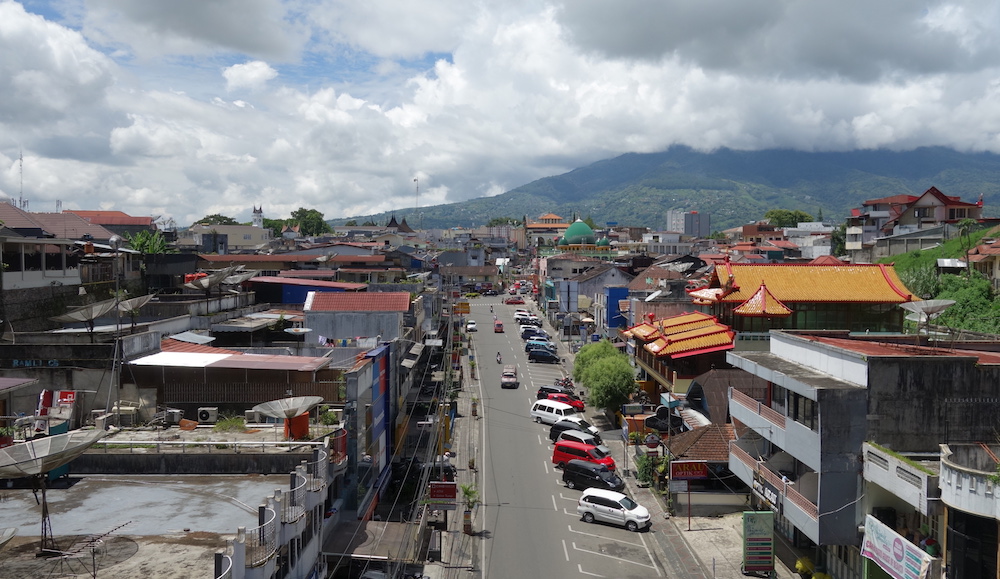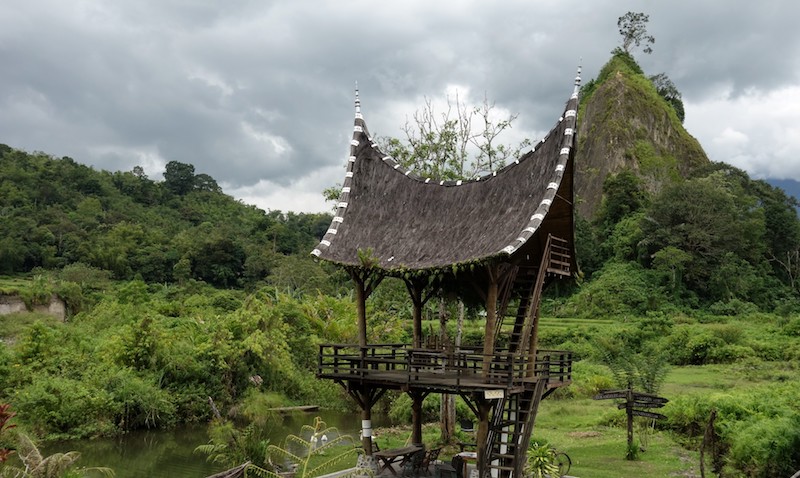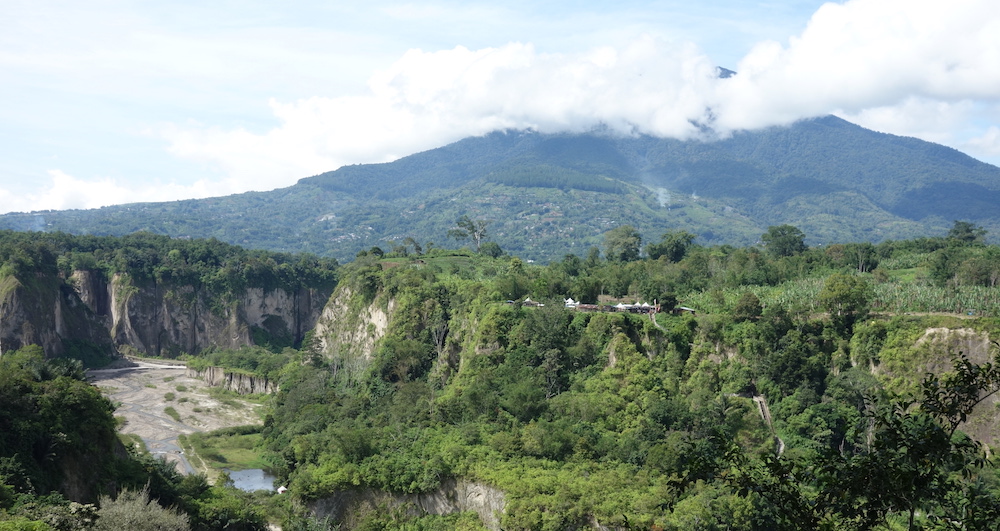Bukittingi
Leaving Yogyakarta, we stop for a short layover in Jakarta, and arrive at the coastal Padang Airport, in West Sumatra and take a 2-hr taxi ride to the highlands. We stay in Bukittingi for 5 days in a simple hostel-like guesthouse and 10 days at Airbnb cabin on Lake Maninjau.
To give a sense of scale in Indonesia… Indonesia is the 4th most populous country in the world, and has 17,000 islands. Bali is pretty small — about the size of Delaware, or twice as big as Tokyo. Java is a big island, roughly the size of England. Java is also the most populous island) in the world and contains half of Indonesia’s population. Sumatra is 3x bigger — longer and bigger than California, with much less people.
Bukittingi
 View of the main road in Bukittingi
View of the main road in Bukittingi
Bukittinggi is a medium-sized town in the highlands roughly in the middle of three large mountains. We came during the low tourist season so people seemed a little surprised to see foreigners. In the 80’s and 90’s tourism was at a high in West Sumatra. In the late 90’s economic crisis and political upheaval hit Sumatra very hard. Some Islamic terrorist attacks in the country also discouraged tourists from this almost completely Muslim region.
Bukittingi is effectively the center of the Minangkabau cultural region. The Minangkabau is a cultural subgroup historically spanning much of West Sumatra. It famous for being a matriarchal society, where women hold land rights and control much of the family affairs. As a result the males in the family have historically left the region to stake claims outside West Sumatra (mainly Java and Malaysia). This may explain why the language of Minangkabau is so similar to Bahasa Indonesia (official language of Indonesia) and Bahasa Malaysia (official language of Malaysia).
Minangkabau are also known to emphasize education. One evening we were gingerly approached by a group of three university students to ask if they could ask a few questions for their English class and a short conversation. We were later approached by two more groups, a little embarrassed but very friendly and we happily posed for their photos – and we imagined we would appear in their class’s presentations a few times. So Bukittingi is also known as a center of education, especially Muslim education. We saw some boarding schools and small universities around. According to some stats, West Sumatra is about 97% Muslim, and the matriarchal aspects of Minangkabau have sometimes been in conflict with the traditional Muslim parts, but even now they seem to coexist in households.

 Water buffalo and roof spires on a treehouse
Water buffalo and roof spires on a treehouse
The town itself was pleasant but didn’t have many attractions. We looked at the dilapidated zoo and adjoining Fort de Kock, a Dutch relic. We explored the large local market — which had a huge, pungent area for meat (mostly beef and chicken) and another huge, more pungent area for fish. Because of the smells Asa no longer likes going to the local markets. Being a mountain town, the prevalence of fish was surprising to us. Much of the fish comes from Lake Maninjau, but also many homes maintain large reservoirs of water near or sometimes under their houses to raise fish.
In our last full day in Bukittingi we walked down an extensive network of Japanese caves constructed during WWII. And when we came out the other side a guide convinced us to on a guided hike down through the nearby canyon and into the small neighboring rice fields and village. Many houses are built in the traditional Minangkabau style with pointy roof spires that are modeled after the horns of the water buffalo, to embody their strength, as the water buffalo have been very important to the agriculture in the region. These pointy roof spires can be found everywhere: on modest homes, local government buildings, mailboxes and signposts. But there are also many houses here and there that are built in the Dutch colonial style, remnants of the colonial past.
 Canyon and Mt. Merapi hidden behind clouds
Canyon and Mt. Merapi hidden behind clouds